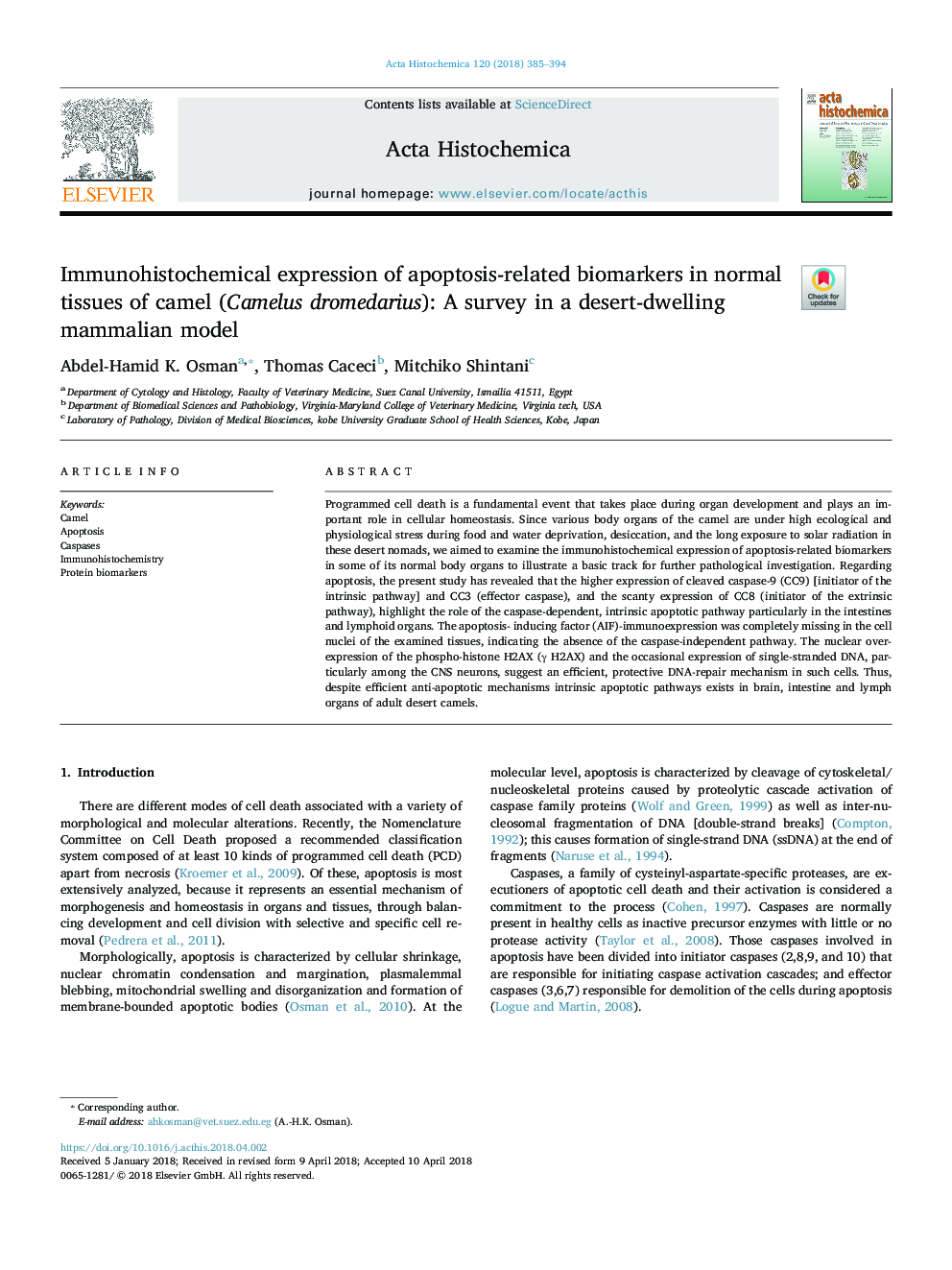| Article ID | Journal | Published Year | Pages | File Type |
|---|---|---|---|---|
| 8287509 | Acta Histochemica | 2018 | 10 Pages |
Abstract
Programmed cell death is a fundamental event that takes place during organ development and plays an important role in cellular homeostasis. Since various body organs of the camel are under high ecological and physiological stress during food and water deprivation, desiccation, and the long exposure to solar radiation in these desert nomads, we aimed to examine the immunohistochemical expression of apoptosis-related biomarkers in some of its normal body organs to illustrate a basic track for further pathological investigation. Regarding apoptosis, the present study has revealed that the higher expression of cleaved caspase-9 (CC9) [initiator of the intrinsic pathway] and CC3 (effector caspase), and the scanty expression of CC8 (initiator of the extrinsic pathway), highlight the role of the caspase-dependent, intrinsic apoptotic pathway particularly in the intestines and lymphoid organs. The apoptosis- inducing factor (AIF)-immunoexpression was completely missing in the cell nuclei of the examined tissues, indicating the absence of the caspase-independent pathway. The nuclear overexpression of the phospho-histone H2AX (γ H2AX) and the occasional expression of single-stranded DNA, particularly among the CNS neurons, suggest an efficient, protective DNA-repair mechanism in such cells. Thus, despite efficient anti-apoptotic mechanisms intrinsic apoptotic pathways exists in brain, intestine and lymph organs of adult desert camels.
Related Topics
Life Sciences
Biochemistry, Genetics and Molecular Biology
Biochemistry
Authors
Abdel-Hamid K. Osman, Thomas Caceci, Mitchiko Shintani,
